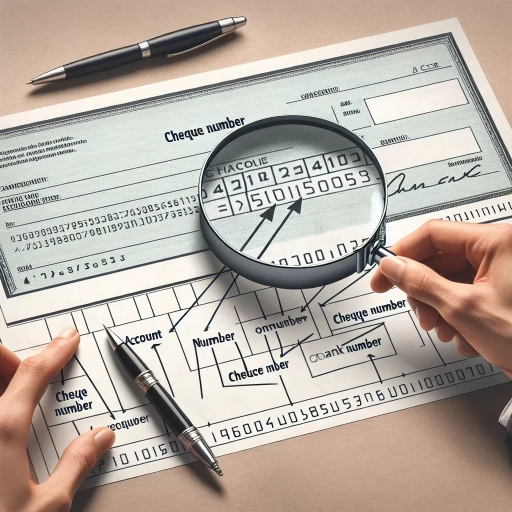How To Read Cheque Numbers

Understanding Cheque Numbers: Why They're Important
Introduction to Cheque Numbers
Understanding the numbering system of cheques is a vital aspect of financial literacy. Each number on a cheque serves a specific purpose. They provide valuable information that helps banks and financial institutions in the processing of transactions. These numbers are not randomly assigned; rather, they follow a system that maintains order and keeps record keeping efficient and accurate.
The Purpose of Cheque Numbers
Each cheque number is unique and serves a purpose. A cheque number, which can be located at the bottom left of the check, is a sequence of digits that is unique to the specific cheque. This makes it easy to trace and track a cheque that has been processed. The identification of individual cheques through these unique numbers ensures accountability and prevents fraud. It allows banks to record the specific details of transactions in their system, keeping a flawless record for future reference.
The Understanding of Cheque Numbers
To effectively read a cheque number, one needs to know the positioning system. The numbers at the bottom of a cheque are usually arranged in the following order – cheque number, sort code, and account number. Understanding how to read these numbers correctly is key to ensuring your cheque transactions go smoothly. Reversing or mixing up these numbers could lead to payment failures or even fraudulent activities.
Steps to Reading Cheque Numbers
Identifying the Components
Before you can read a cheque number, it's crucial to be able to identify its three primary components: the cheque number, the sort code, and the account number. Each plays a vital role in processing the cheque. The cheque number helps to identify the cheque uniquely. The sort code is essential for identifying the bank and branch where the account was opened. Meanwhile, the account number specifies the customer's account at that particular bank.
Understanding the Order of Numbers on a Cheque
The sequence of numbers at the bottom of a cheque usually follow a specific order: first, the cheque number, followed by the sort code and finally the account number. The placement of this information plays a considerable role in making sure the cheque gets processed correctly.
Reading the Cheque Numbers
Now that we’re familiar with identifying the components and understanding their order, it's time to read the cheque numbers. As mentioned before, the cheque number is typically found at the bottom left. Paying attention to the sequence of these numbers and their placement is crucial in ensuring transactions get completed efficiently, avoiding delays, and combating fraudulent activities.
Preventing Mistakes While Reading Cheque Numbers
Relevance of Accuracy
Accuracy in reading cheque numbers cannot be overemphasized. A lot rides on these numbers— essentially, the efficiency of financial transactions. The smallest mistake can significantly hinder the whole transaction process, causing delays or, worse, errors that result in financial losses.
Daily Practice
Regularly dealing with cheques and maintaining constant familiarity with the numbering pattern can help prevent mistakes while reading cheque numbers. This practice also enhances financial literacy, which is beneficial not just in reading cheques but also in other areas of finance and banking.
Staying Informed
Adapting to changes in cheque processing methods, learning about updates on cheque clearing systems, and staying updated on the latest ways to combat fraud related to cheque handling are all ways to prevent possible errors while reading cheque numbers. Staying informed helps maintain accurate reading and efficient financial transactions.